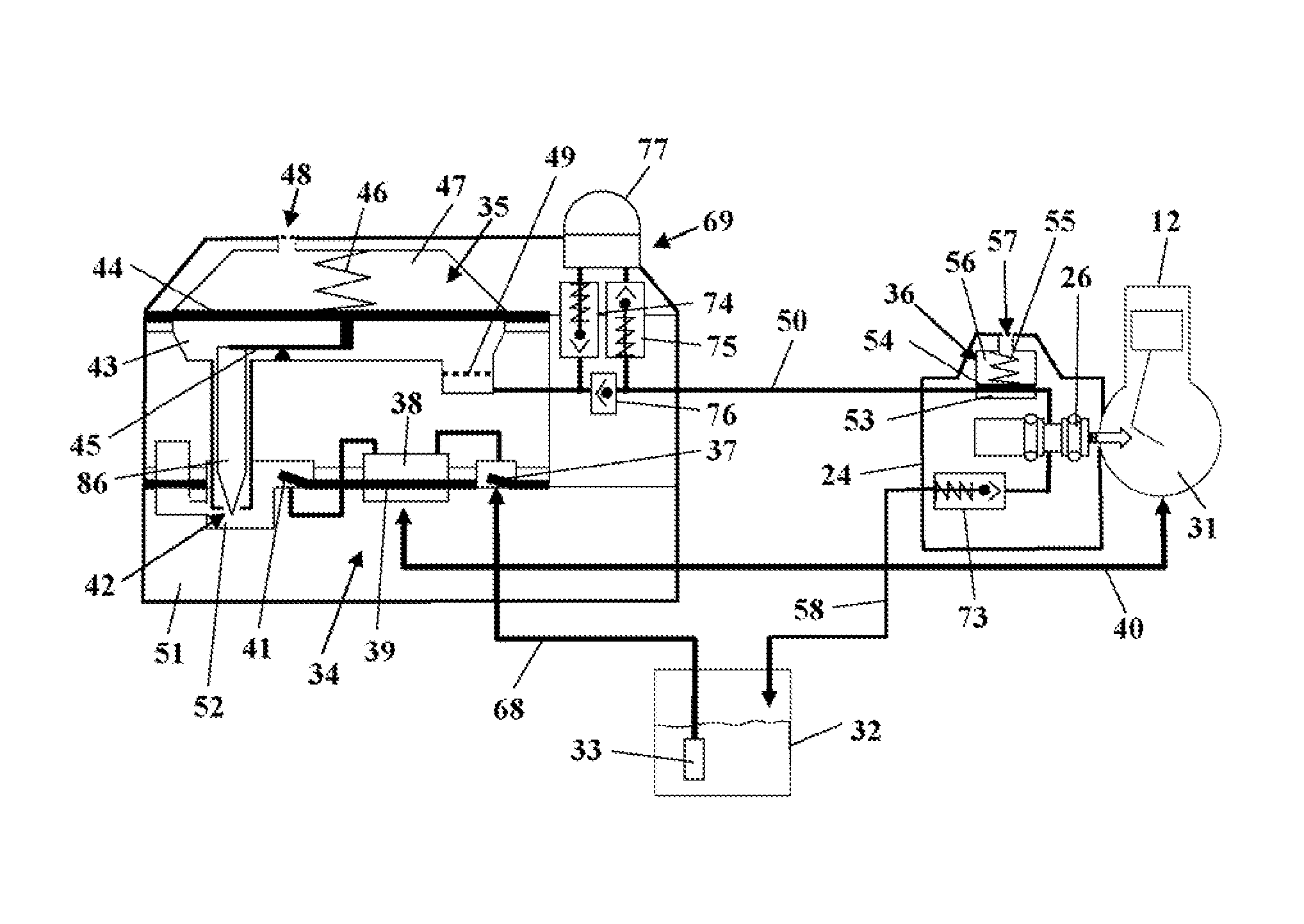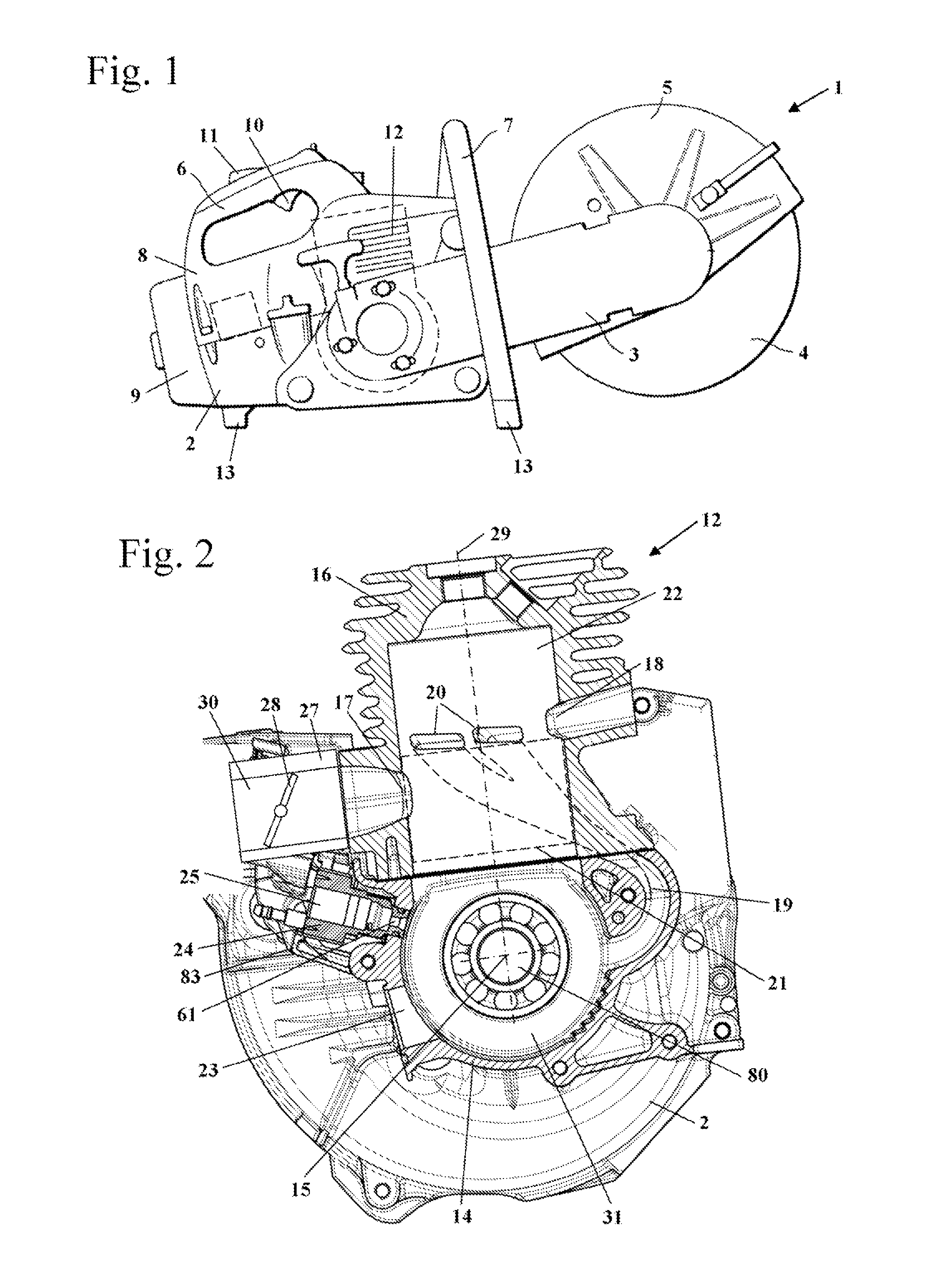Internal combustion engine with fuel system
a fuel system and internal combustion engine technology, applied in the direction of liquid fuel feeders, machines/engines, mechanical apparatus, etc., can solve the problems of vapor bubble formation, vapor bubble formation in the fuel valve, and difficulty in starting the internal combustion engine or even preventing the engine from starting, etc., to achieve the effect of simple configuration and effective priming action
- Summary
- Abstract
- Description
- Claims
- Application Information
AI Technical Summary
Benefits of technology
Problems solved by technology
Method used
Image
Examples
Embodiment Construction
[0023]FIG. 1 shows an embodiment of a hand-guided power tool in the form of a cut-off machine 1. Instead of being used in the cut-off machine 1, the fuel system according to the invention can also be used in connection with other hand-guided power tools such as trimmers, motor chainsaws, blowers and the like. The cut-off machine 1 has a housing 2 in which an internal combustion engine 12 is arranged. On the housing 2, a cantilever arm 3 is secured that has at its free end a cutter wheel 4. The cutter wheel 4 is partially covered by a protective cover 5. The cutter wheel 4 is rotatingly driven by the internal combustion engine 12. For guiding the internal combustion engine 1, a top handle 6 as well as grip pipe (handlebar) 7 are provided. The handlebar 7 spans the housing 2 at the front side that is facing the cutter wheel 4. The top handle 6 is integrally formed on a hood 8 of the housing 2. On the top handle 6 a throttle trigger 10 and a throttle lock 11 are pivotably supported. At...
PUM
 Login to View More
Login to View More Abstract
Description
Claims
Application Information
 Login to View More
Login to View More - R&D
- Intellectual Property
- Life Sciences
- Materials
- Tech Scout
- Unparalleled Data Quality
- Higher Quality Content
- 60% Fewer Hallucinations
Browse by: Latest US Patents, China's latest patents, Technical Efficacy Thesaurus, Application Domain, Technology Topic, Popular Technical Reports.
© 2025 PatSnap. All rights reserved.Legal|Privacy policy|Modern Slavery Act Transparency Statement|Sitemap|About US| Contact US: help@patsnap.com



